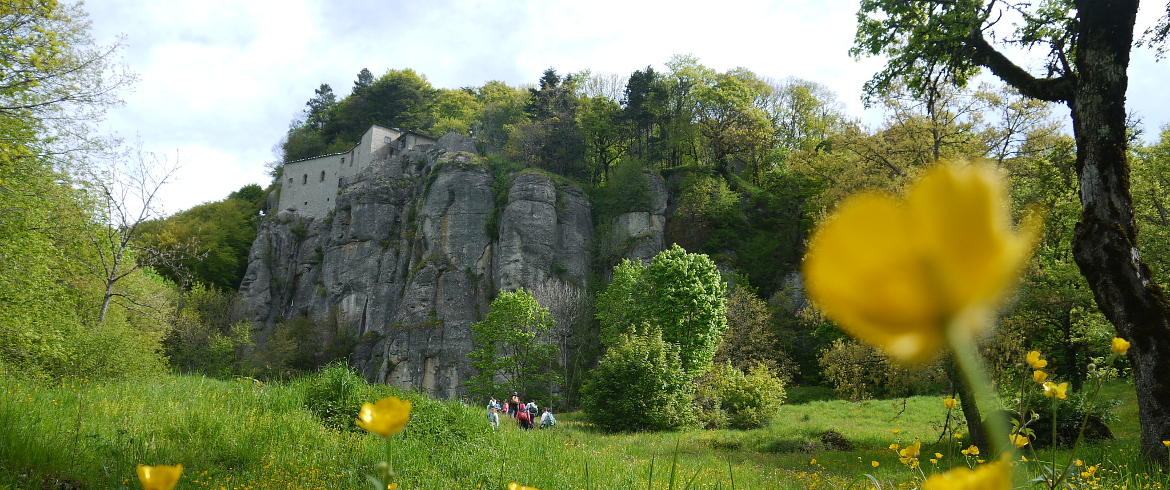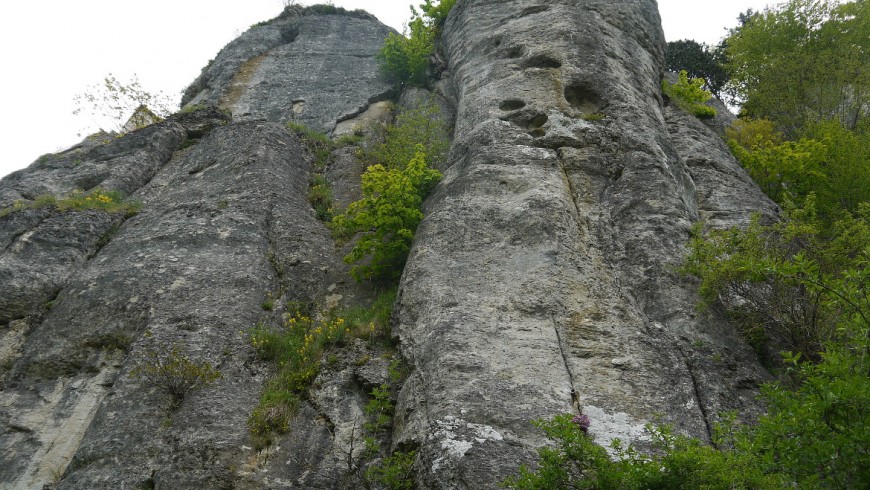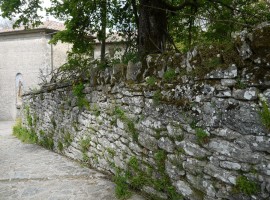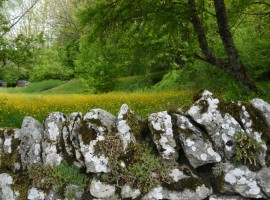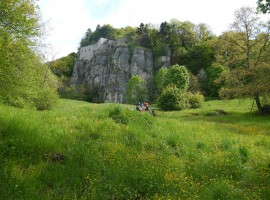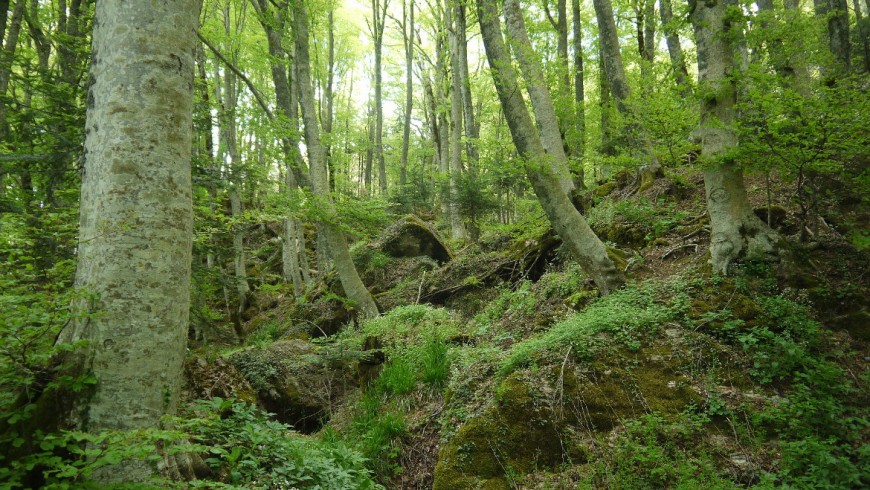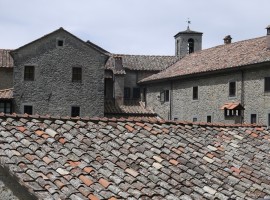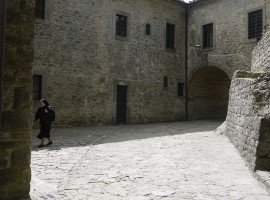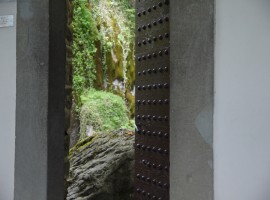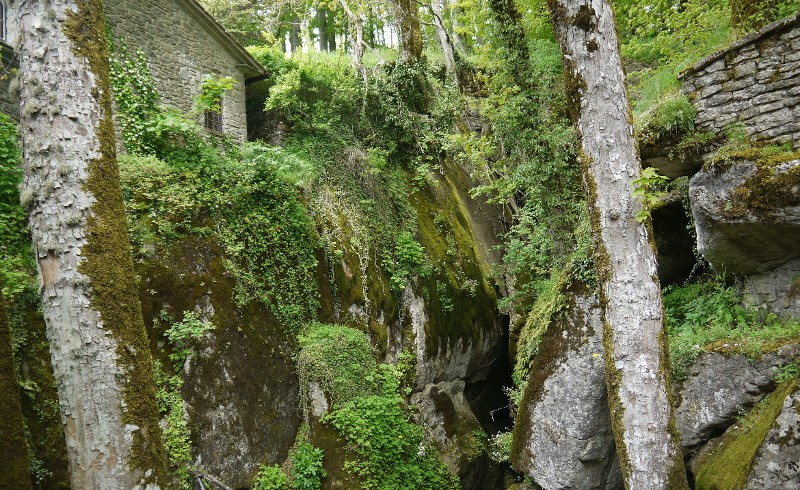A forest of fir trees, thousands of sacred pillars that mark the rhythm of my footsteps through this great natural cathedral. I feel small and I think I hear the rustling of the leaves through the stories of writers and poets of which are steeped in these places, the stories of monks, saints and pilgrims who have chosen these forests as a place to live.
We are in the heart of the Valle Santa, in the Casentino Forests National Park. It’s a “closed” valley of Tuscany, because until a century ago to get this was not so easy, there were no access roads but only small trails through the woods, crossing small villages and rivers.
Maybe that’s why the Casentino has been featured by the early nineteenth-century travelers as a ‘”enchanted island where they seem to be asleep in the value of time“. Perhaps for the same reason the monks who crossed these forests chosed to stay here and build their meditation space.
Today, this secluded valley is a beautiful and wild place, outside the usual tourist routes in Tuscany, where it is possible to recover an authentic contact with nature. A valley of woodcutters, charcoal burners, transhumant and mills, rich in important historical presences, ancient stone villages, small churches and picturesque sanctuaries.
The three most important are those of Vallombrosa, Camaldoli and La Verna, who in 1833 with the shapes and colors of nature had fascinated the nineteenth-century travelers of the Grand Tours.
In 1833 the British intellectual Lady Charlotte Maria Bury dedicated to the Queen of England an elegant guide in verse entitled precisely “The three great Sanctuaries of Tuscany. Vallombrosa, Camaldoli, La Verna, “a poem with valuable information and an elegant travel volume accompanied by etchings on the shrines of Vallombrosa, Camaldoli and La Verna. Lady Charlotte Maria Bury described the forms of the romantic nature of the Casentino, that religion has consecrated forever.
But many years before the pilgrims, saints and monks had chosen these same places for their intense nature, poetic and spiritual St. Francis chose the mountain of La Verna, St. Romuald the dense forest of fir trees of Camaldoli.
Walking in the Sacred Forests, to the Sanctuary of La Verna
In 1213 the Count Orlando Cattani invited St. Francis to visit a very impressive natural place, and gave it to him as a gift (every year in July, you can watch a re-enactment in costume suggestive of this important historical event). This area is today one of the most famous and picturesque monasteries of the Casentino.
To get there we walk along the ancient path of the Sacred Forests that we take through a narrow opening in a wall of stone and natural rock. We walk on a lawn where the grass is dotted with millions of colorful flowers, and it is sufficient to look up to be captured by the sculpture of the sanctuary. On top of the mountain of La Verna, the old building is at one with the natural sculpture of the rock.
The route passes through a picturesque forest of fir trees, where large boulders covered with moss create grottoes and natural caves, once used by the monks as ice chests.
In the distance we can see the mountains and the natural reserve of Sasso Fratino, the oldest nature reserve in Italy, in which since 1959 has banned access to the man. In that stretch of virgin forest located on a particularly steep, ancient trees and plants are preserved, and around this mine of biodiversity is created at the beginning of the nineties the Natural Park of Casentino Forests.
We walk without haste in this forest of monuments, savor the scent of moss and bark. Escapes the gaze upward, including specimens of ancient firs and beeches, which reach heights of 50 meters and a diameter of 180 cm, or down on the damp ground, looking for footprints of deer, wolves, deer, roe deer and boar …
The path of sacred forests is a path of meditation in the beauty of nature that preparing for the arrival in the sanctuary of La Verna.
Once inside the walls of the sanctuary there is a feeling of returning to reality, with the hat among tourists and monks crossing the simple spaces of ancient architecture. The sound of bells marks the everyday time.
On the wall of a long corridor with regular frescoes of the story of St. Francis there is an unexpected door, showing the beauty of nature where nothing is regular and predictable. Beyond the door a striking landscape of rocks, trees and rocks again offer a space for poetry and spirituality. From here, down a few steps in a natural cave, you will discover the dark space and crop chosen by St. Francis as a resting place.
The heart of the sanctuary seems to this corner of nature, punctuated by the rustle of the leaves by birdsong, which rewinds like a movie in front of my eyes the slow path, meadows, cliffs and forests sacred path to get up to here.
Info: guided tours inside the sanctuary of La Verna, you should make an appointment with the Friars (santuarioverna@gmail.com, 0575 5341)
You might like also:
Walking in Val d’Orcia, along the Tuscany’s Via Francigena
What color is your perfect vacation? 5 routes between colors of nature in Italy
At low speeds, on the old rails of Italy
